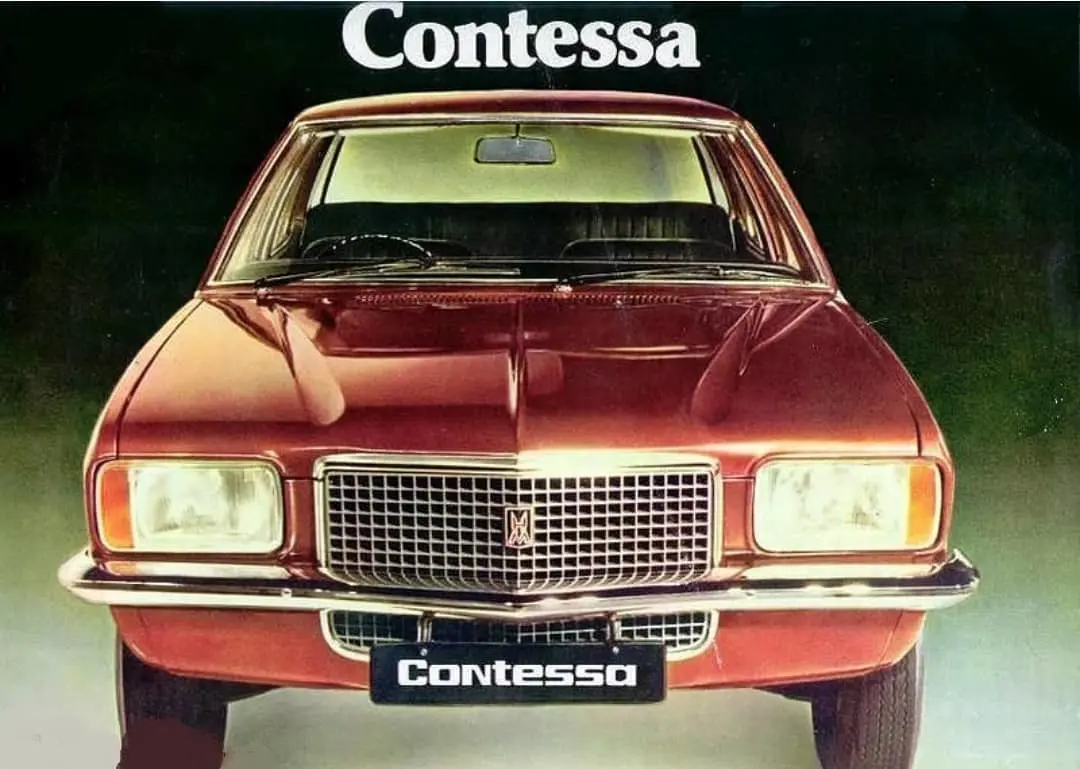“Sheer poetry in motion”– The Hindustan Contessa
20 December 2023
For many Britons, the final of 25,085 VXs leaving the Luton factory in July 1978 marked the end of the Victor story, one that commenced in 1957. But this was not quite the end of the narrative, as Vauxhall sold the design to Hindustan Motors for £1.5 million. In the 1990s, the Contessa appeared in several films and was known as “the muscle car of India”.
The Kolkata firm approached Vauxhall in 1979, and Luton shipped the FE tooling to India the following year. Hindustan built several prototypes in 1981 and 1982 before introducing the “Stunning New Contessa” on the 6th January 1984. The price was a steep Rs 83,437.50, but this was a new model with a: “Sleek body, elegant fittings, plush carpeting – everything you’ve always looked for in a luxury car. and more. Sheer poetry in motion”.

More prosaically, the Contessa combined the VX’s body with the Ambassador’s – aka the Morris Oxford Series III - 1.5-litre BMC B-series engine and four-speed transmission with no synchromesh on first gear. Within 24 hrs of its launch the waiting list extended to August, and, a week later, until February 1985, the year production began.
Hindustan made 1,826 Contessas in its first year, and the writer Vejay Anand notes: “Sales got off to a slow start, with most cars going to government and municipal officials”. Fortunately, such authority figures tended to be more concerned with their dignity than performance, which was just as well. The Contessa’s power output was 50bhp with a top speed of 78 mph. One Indian journal complained how it “ambles up” from 0 – 50 mph in 30 seconds.
Another problem for Hindustan was the first Contessas were mostly hand-built, resulting in a limited output and high manufacturing costs. But as Sirish Chandran wrote in Evo India the Contessa was:
three decades more modern than anything in the existing car park save the woefully underpowered Standard 2000. As a kid, clocking a Contessa was an event. Going for a drive in one was something you talked about for the next six months.
And compared with the Ambassador and the Premier Padmini (a locally made 1962 Fiat 1100 D), the Contessa did look positively modern. It was also the first Indian car with servo-assisted dual circuit front disc brakes – and the second with independent front suspension.
Hindustan was in negotiation with Isuzu at the time of the Contessa’s launch and in October 1987, they unveiled the Japanese-powered Classic 1.8GL with a five-speed gearbox. This development improved its performance and popularity; the top speed was now over 100 mph. Sales peaked in 1988 when 4,982 units left the Uttarpara factory. By then its main rival, the Standard 2000 - a locally-built Rover SD1 - was virtually no more.
The company offered a 2.0-litre Isuzu 4FC1 diesel version in 1990, the year before the liberalisation of the Indian car market. Hindustan introduced a turbo-diesel engine in 1996 and production ended in June 2002 after 13,463 models. Today the Contessa is a much-sought-after collector’s item in India – sadly, no example has yet made its way to this country – and a splendid conclusion to the Vauxhall Victor’s story.
To cite one brochure: “It's time you put the roads at your command”.
